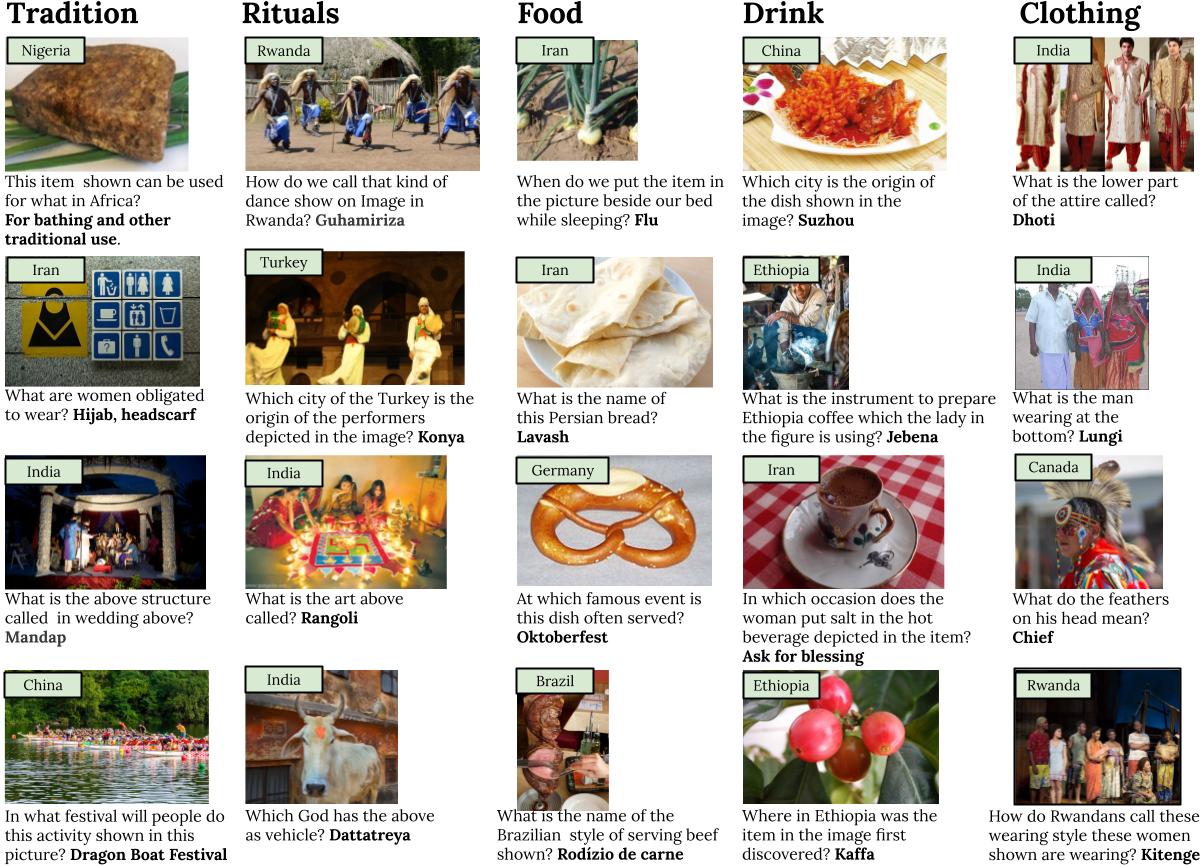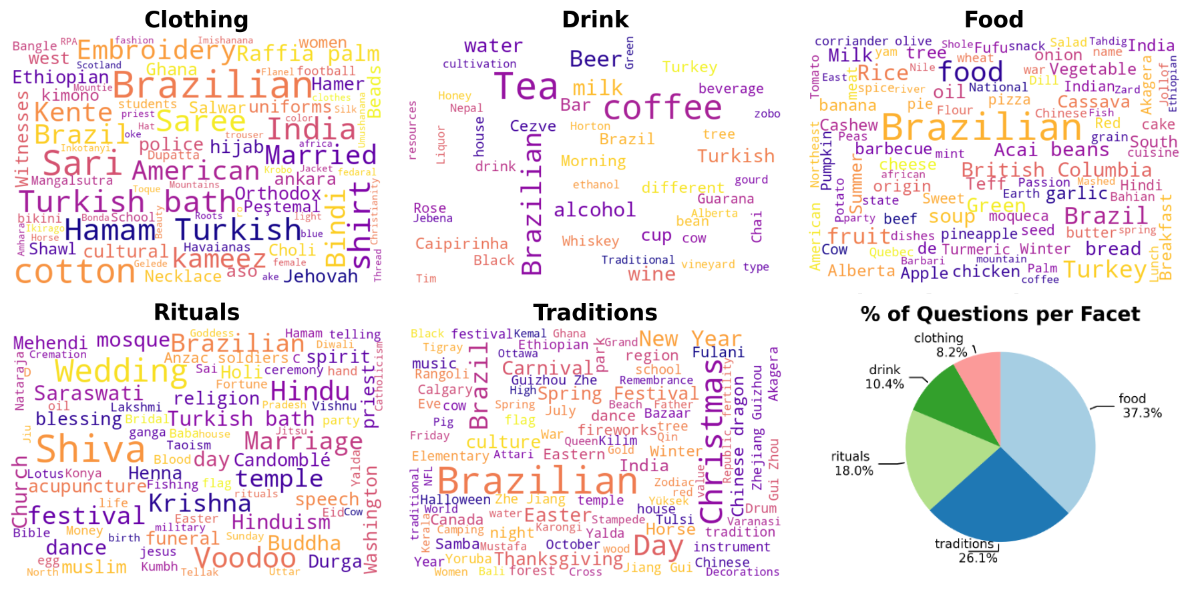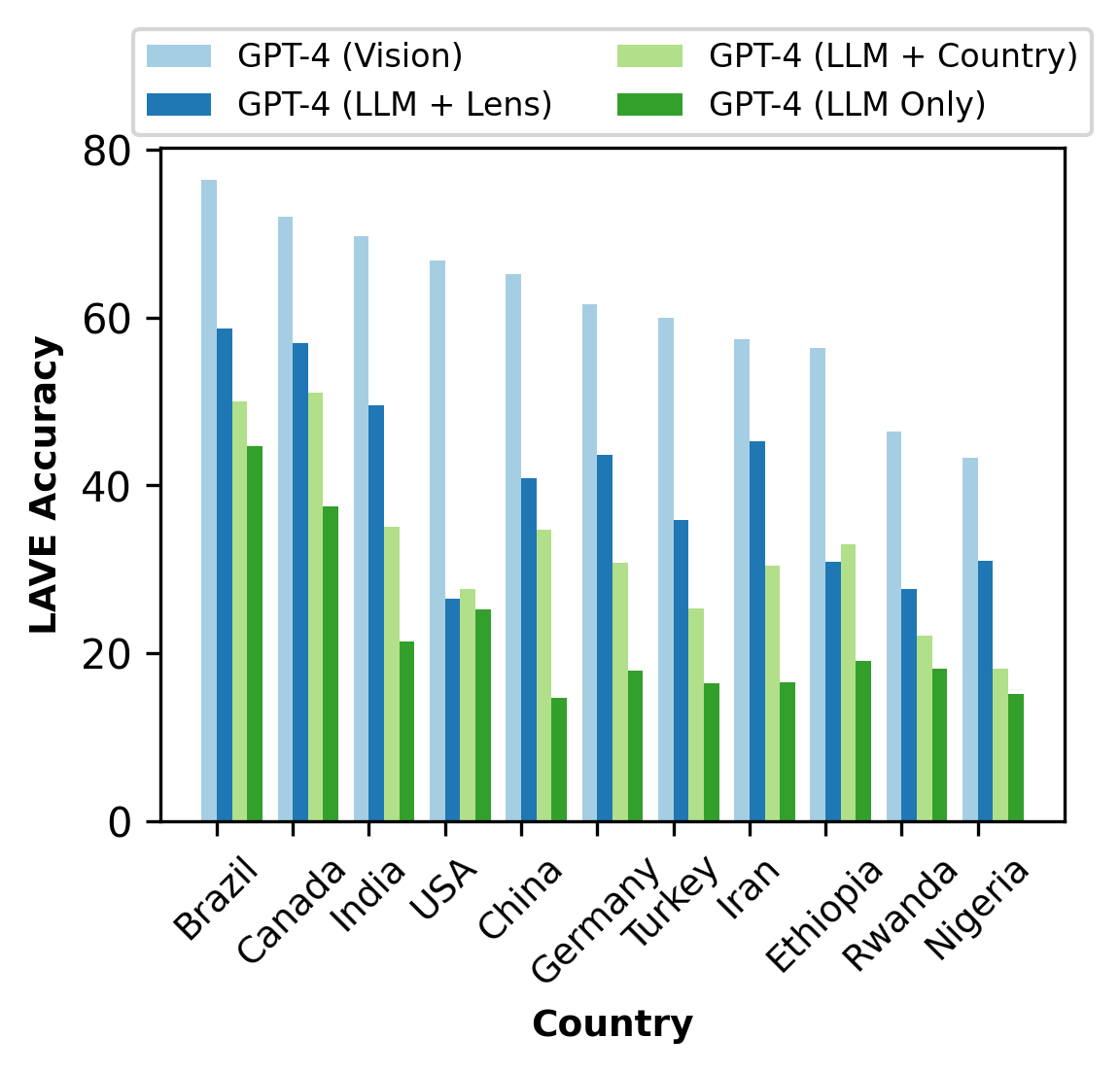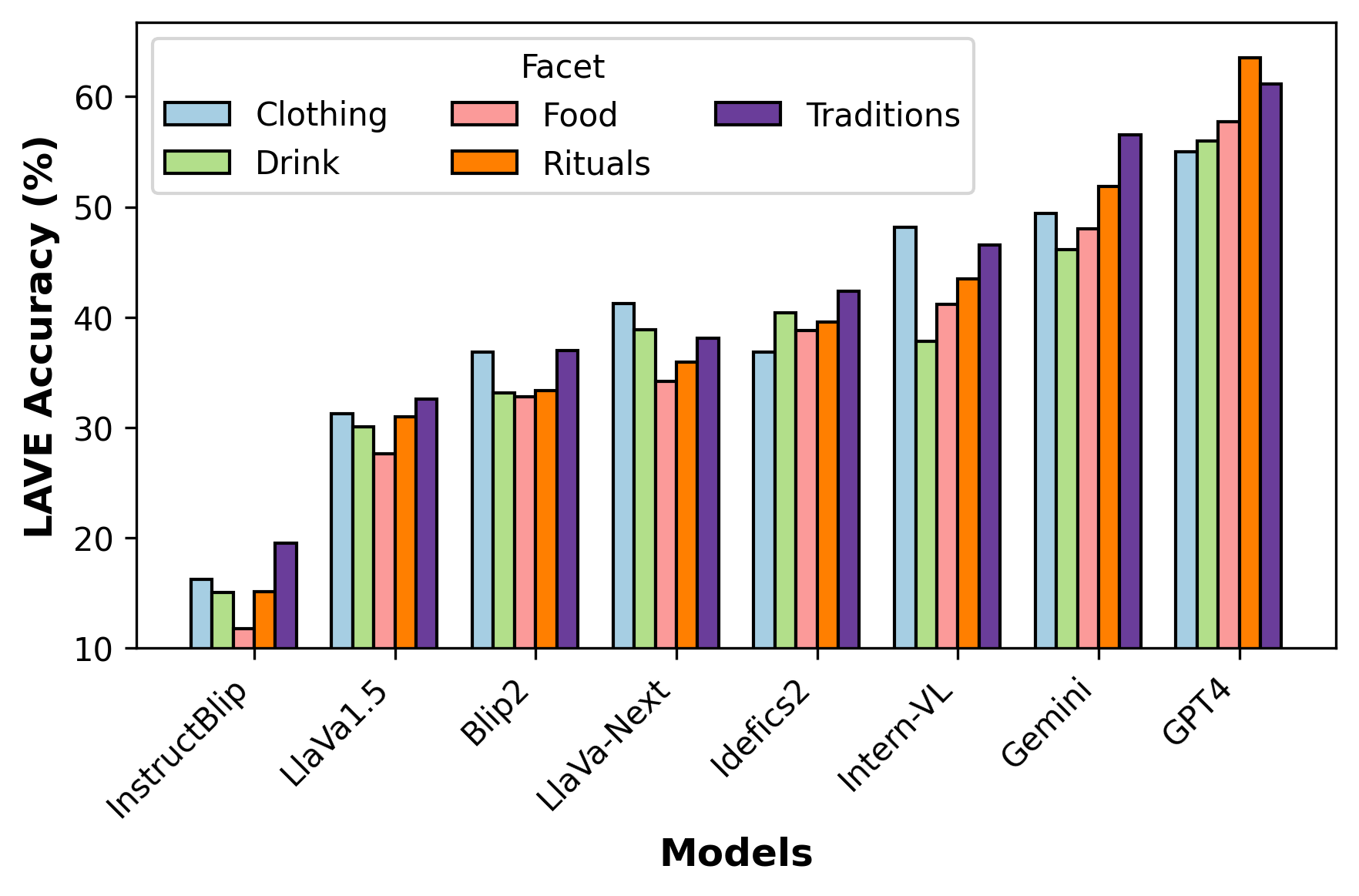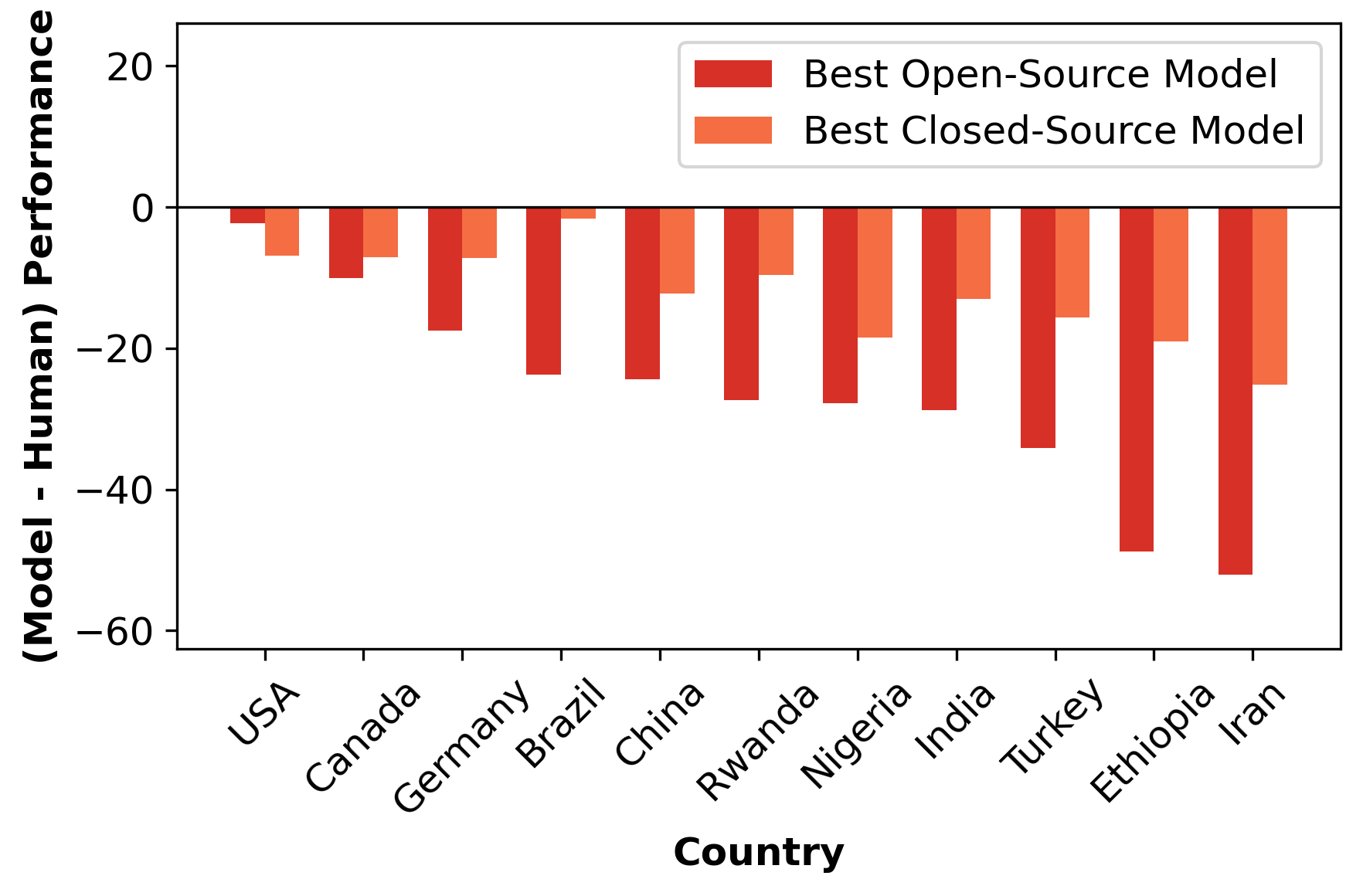Citation
If you found this work useful in your own research, please consider citing the following:
@inproceedings{nayak-etal-2024-benchmarking,
title = "Benchmarking Vision Language Models for Cultural Understanding",
author = "Nayak, Shravan and
Jain, Kanishk and
Awal, Rabiul and
Reddy, Siva and
Steenkiste, Sjoerd Van and
Hendricks, Lisa Anne and
Stanczak, Karolina and
Agrawal, Aishwarya",
editor = "Al-Onaizan, Yaser and
Bansal, Mohit and
Chen, Yun-Nung",
booktitle = "Proceedings of the 2024 Conference on Empirical Methods in Natural Language Processing",
month = nov,
year = "2024",
address = "Miami, Florida, USA",
publisher = "Association for Computational Linguistics",
url = "https://aclanthology.org/2024.emnlp-main.329",
pages = "5769--5790"
}
